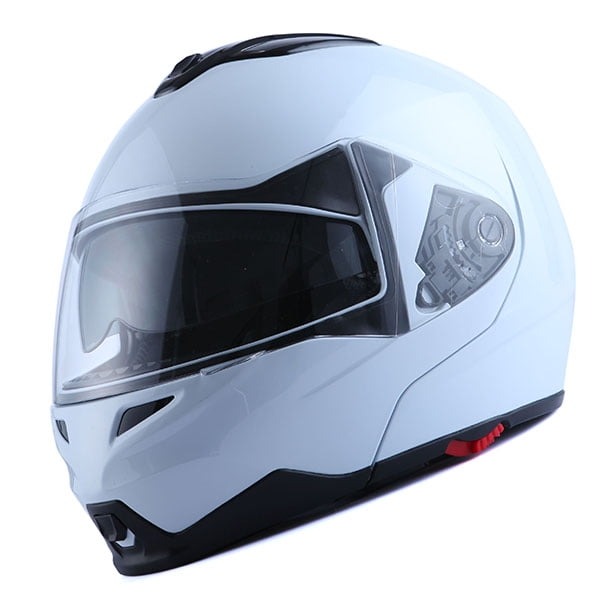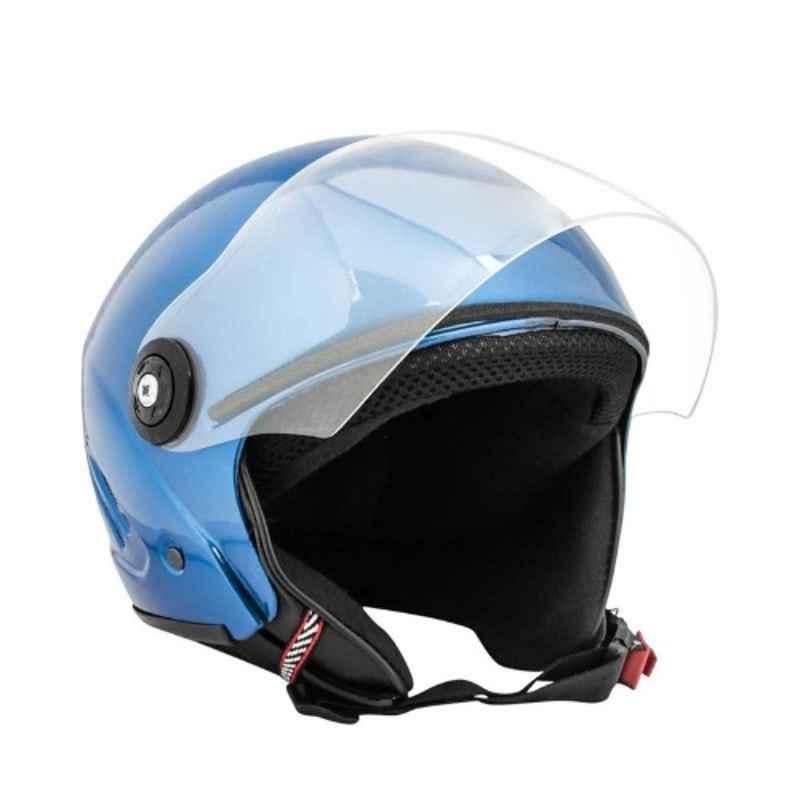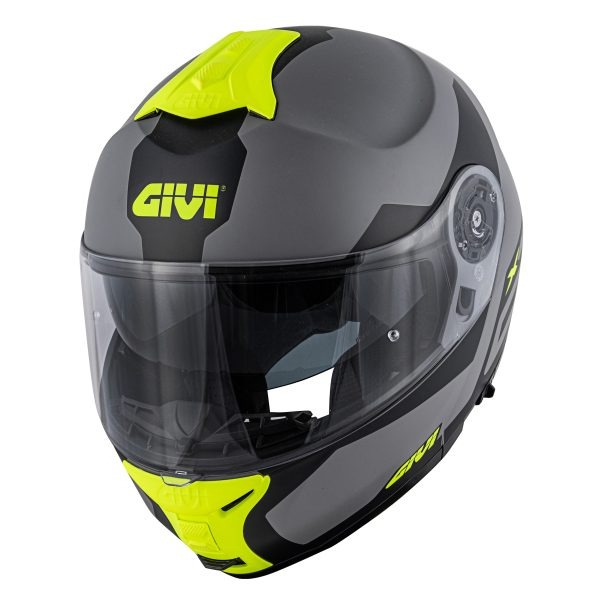Jan 15, 2025
How to Measure Motorcycle Helmet Size: A Comprehensive Guide
Introduction to Helmet Fitting
Understanding how to measure motorcycle helmet size is crucial for ensuring optimal safety and comfort while riding. Proper helmet fitting is crucial for your safety on a motorcycle. A well-fitted helmet offers the best protection during a crash. It can also reduce the risk of injuries. But many riders struggle with how to measure motorcycle helmet size. In this section, we will cover the basics of helmet fitting. We will also explain why it’s important to get it right.
Finding the correct helmet size is not just about comfort. A helmet that is too big can slip off during an accident. One that is too tight can cause headaches and discomfort during a ride. In order to measure your helmet size accurately, you need to understand your head shape. Head shapes can be round, intermediate oval, or long oval. The helmet shape should match your head to ensure a snug fit.
A snug fit means the helmet is tight enough to stay in place but not too tight to cause pain. The helmet should sit level on your head. It should cover the forehead and not tilt back. There should be no gaps at the sides, and it must allow for full visibility.
Mastering how to measure motorcycle helmet size is essential for every rider. Keep following the guide to learn the steps involved in measuring your helmet size correctly. We will provide a clear, step-by-step guide so you can confidently find a helmet that fits you perfectly.
Step-by-step Guide to Measure Helmet Size

Ensuring the right helmet size is vital for your safety on a motorcycle. Follow these steps to measure your helmet size accurately.
Gather Necessary Tools
Before you begin, you must gather a few tools:
- A soft measuring tape, commonly used for tailoring.
- A mirror to help you see if the tape is level around your head.
- A friend can assist, making the process easier and more accurate.
- A note pad and pen to record your measurement.
Make sure your hair is as flat as possible. This avoids overestimation of your head size.
Find Your Head Circumference
To measure your head:
- Place the end of the tape at the middle of your forehead.
- Wrap the tape around the widest part of your head, usually about an inch above the eyebrows.
- Keep the tape level and firm across the temples and the back of the skull.
- Record the measurement where the tape overlaps.
- Repeat the process a couple of times for accuracy.
Check the Helmet Size Chart
Once you have your head circumference:
- Compare it with the manufacturer’s helmet size chart.
- Remember, each brand may have different sizing, so always refer to their specific chart.
- Look for a helmet size where your measurement falls comfortably within the size range.
Keep in mind that a proper fit should be snug, without causing discomfort. A helmet that’s too tight or too loose can compromise your safety.
The Importance of the Right Fit
Having the right motorcycle helmet fit is crucial for several reasons. Most importantly, it ensures your safety. In the event of an accident, a properly fitting helmet can absorb impact effectively. This minimizes the risk of severe head injuries. For maximum protection, the helmet must sit snugly on your head. A loose helmet might come off or shift, leaving you vulnerable to injury.
Comfort is another key reason for a precise helmet fit. Long rides can become unbearable with an ill-fitting helmet. If it’s too tight, it can cause headaches and pain. If it’s too loose, it might shake or be noisy due to the wind. The constant distraction and discomfort could make you less alert to danger. A helmet that fits just right will feel comfortable, even on long journeys, and won’t distract you from the road.
Finally, the right fit affects the helmet’s functionality. For example, visors should seal properly to prevent wind or debris from getting in. If a helmet is too big, the visor might not close right. A well-fitted helmet also ensures that you have good visibility. Helmets that slip and slide can obstruct your vision and make it hard to see other vehicles, which is dangerous.
In summary, the correct fit ensures safety, comfort, and functionality when you’re on the road. Always invest time in finding the right size to avoid unnecessary risks. Keep these points in mind as you continue learning how to measure motorcycle helmet size, and remember that your safety is priceless.
Types of Motorcycle Helmets and Their Fit
Choosing the right type of helmet is as important as measuring for the correct size. Different styles offer varied levels of protection, comfort, and convenience. Let’s explore the most popular types and their specific fits.
Full-Face Helmets
Full-face helmets provide the most coverage. They cover the top, back, and front of your head. Their visor also protects your eyes from dirt and wind. When measuring for a full-face helmet, ensure the cheek pads press against your cheeks. Yet, they should not cause pain. The helmet should fit tightly around your head. But, it must not cause any discomfort or headaches. Keep the keywords “how to measure motorcycle helmet size” in mind for an accurate fit.
Open-Face Helmets
Open-face helmets, or “3/4 helmets”, cover the top and back of the head but not the face. They often feel lighter and offer more visibility. The fit should be snug around the entire head circumference. Without a chin bar, ensuring the helmet does not move around is key. Use the steps outlined earlier to measure your head size correctly.
Modular Helmets
Modular helmets combine features of full-face and open-face helmets. You can lift the chin bar up. When trying on a modular helmet, check the fit with the chin bar up and down. Make sure the helmet locks securely in both positions. The helmet should not press into your forehead or cheeks too hard when closed.
Each helmet type requires careful consideration of fit. Always remember to check the size guide for each brand and helmet type. Now, let’s move on to tips for trying motorcycle helmets on and adjusting the fit for ultimate safety and comfort.
Tips for Trying on Motorcycle Helmets

Trying on a motorcycle helmet is key to ensure it fits right. Here are practical tips to help during the process.
Adjusting the Fit
Start by placing the helmet securely on your head. Adjust the straps to prevent the helmet from moving. A well-adjusted helmet will feel snug but not tight. Ensure the helmet sits squarely on your head, without tilting.
Checking for Pressure Points
After adjusting, wear the helmet for a few minutes. Notice any areas where you feel excessive pressure. Common pressure points include the forehead and cheeks. If you feel discomfort, the helmet might be too tight. Consider trying a slightly larger size or a different model. Remember, a helmet that fits well should feel comfortable and secure.
Common Mistakes When Measuring Helmet Size
Measuring a motorcycle helmet size can be tricky. Here are some common mistakes to avoid:
Incorrect Positioning of Tape Measure
Many riders place the tape too high or low. Always start at the forehead and wrap it around, maintaining the level.
Using a Hard Tape Measure
Use a soft measuring tape for accuracy. Hard tapes can provide misleading measurements.
Not Accounting for Hair Volume
If you have thick or long hair, compress it down or consider how it might affect fit.
Measuring Too Tightly
Wrap the tape firmly but not too tight. You want the helmet snug, not pressing painfully.
Ignoring Head Shape
Understanding your head shape is vital for the right fit. Make sure the helmet matches your head’s contour.
By avoiding these common errors, you can measure your motorcycle helmet size correctly.
After Purchase: Ensuring Helmet Comfort and Safety

After buying the right helmet, your job isn’t done. Making sure it stays comfortable and safe is vital. Here are key tips to maintain helmet comfort and safety post-purchase.
Keep Your Helmet Clean
A clean helmet is a comfortable one. Wipe the exterior with clean, damp cloth regularly. For the interior, use a gentle cleaner made for helmet linings. This helps get rid of odors and bacteria.
Check Helmet Fit Periodically
Over time, helmet padding compresses. Regularly check fit to ensure it remains snug. If it loosens, consider replacing pads or the helmet.
Inspect for Damage
Always inspect your helmet for signs of wear or damage. Even small cracks can reduce protection. If it’s damaged, replace it immediately.
Store Properly
Store your helmet in a cool, dry place. Avoid direct sunlight and extreme heat. This prevents material degradation and maintains the helmet’s integrity.
Avoid Customization That Impacts Safety
Don’t drill holes or add accessories that might weaken the helmet structure. Safety should always come first.
By keeping these tips in mind, you ensure your helmet provides maximum comfort and protection on every ride. Remember to always prioritize safety over aesthetics when it comes to your motorcycle helmet.
More Details